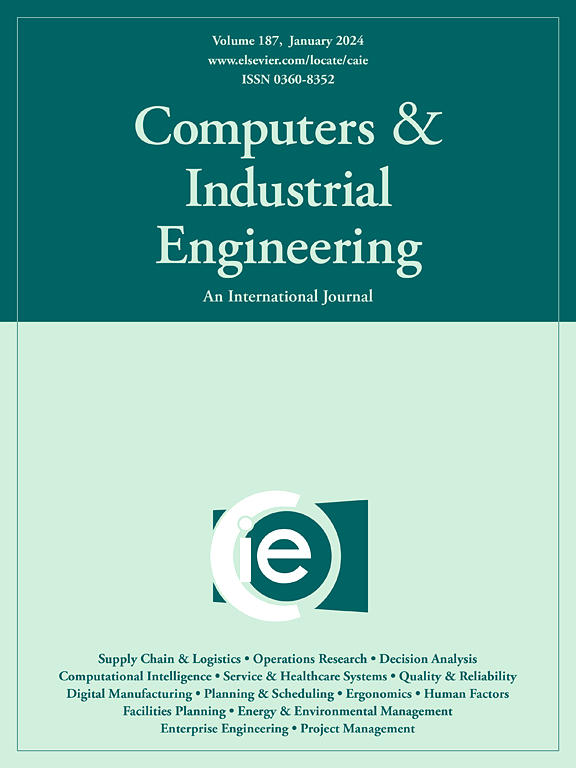基于OWA相似性的模糊TOPSIS:反映不确定条件下多准则、多专家评价的风险态度
IF 6.7
1区 工程技术
Q1 COMPUTER SCIENCE, INTERDISCIPLINARY APPLICATIONS
引用次数: 0
摘要
利用有序加权平均(OWA)算子,提出了一种基于相似性的模糊偏好排序算法(fTOPSIS)。使用OWA操作符,我们以两种方式扩展了基于相似性的fTOPSIS的使用。首先,在现实世界的几种工程决策问题中,需要高度满足的准则数量比满足特定准则更为重要;此外,在专家评估的汇总中,提供好/坏评估的专家数量可能是至关重要的。现在,通过在建议的方法中使用OWA,可以实现这种泛化。其次,通过使用语言量词来定义OWA的权重,并允许对模糊正理想解决方案(FPIS)和模糊负理想解决方案(FNIS)的相似性进行不同的量化,我们允许决策者的风险偏好得到反映。这使我们能够首次在fTOPSIS中对风险厌恶或风险寻求决策进行建模。使用fTOPSIS的多个专家评估的聚合,考虑到最终评估用户的特定语言表达的风险态度,现在也在fTOPSIS中启用。该方法的优点在于能够根据决策者的风险偏好对方法进行调整。现在还可以根据最终用户的风险偏好汇总多个专家的评估。该提案允许使用OWA操作人员对FPIS和FNIS进行单独处理,以反映决策者的乐观/悲观情绪。目前的研究结果表明,通过这样做,我们能够反映风险态度,并根据风险偏好获得不同的排名。本文章由计算机程序翻译,如有差异,请以英文原文为准。
Similarity based fuzzy TOPSIS with OWA: Reflecting risk attitudes in multiple-criteria and multi-expert evaluation under uncertainty
We present similarity based fuzzy Technique for Order of Preferences by Similarity to Ideal Solution (fTOPSIS) using ordered weighted averaging (OWA) operators. With OWA operators we extend the use of similarity based fTOPSIS in two ways. First in several types of real world engineering decision making problems the amount of criteria required to be satisfied to a high extent is more important than satisfying particular criteria; also in the aggregation of expert evaluations the amount of experts providing good/bad evaluations might be critical. This kind of generalization is now made possible by using OWA in the proposed method. Second by using linguistic quantifiers to define weights for OWA and allowing different quantification for the similarity to Fuzzy Positive Ideal Solution (FPIS) and Fuzzy Negative Ideal Solution (FNIS) we allow decision-maker’s risk preference to be reflected. This allows us to model risk-averse or risk-seeking decision making in fTOPSIS for the first time. Aggregation of multiple expert evaluations using fTOPSIS that considers specific linguistically expressed risk-attitude of the user of the final evaluation is now also enabled in fTOPSIS. The advantage of the proposed method lies in the ability to adjust the method according to decision makers’ risk preferences. Multiple expert evaluations can also now be aggregated according to the end-user’s risk preference. The proposal enables separate treatment of FPIS and FNIS using OWA operators to reflect decision maker’s optimism/pessimism. Presented findings show that by doing this we are able to reflect risk attitudes and receive different ranking corresponding with risk preferences.
求助全文
通过发布文献求助,成功后即可免费获取论文全文。
去求助
来源期刊

Computers & Industrial Engineering
工程技术-工程:工业
CiteScore
12.70
自引率
12.70%
发文量
794
审稿时长
10.6 months
期刊介绍:
Computers & Industrial Engineering (CAIE) is dedicated to researchers, educators, and practitioners in industrial engineering and related fields. Pioneering the integration of computers in research, education, and practice, industrial engineering has evolved to make computers and electronic communication integral to its domain. CAIE publishes original contributions focusing on the development of novel computerized methodologies to address industrial engineering problems. It also highlights the applications of these methodologies to issues within the broader industrial engineering and associated communities. The journal actively encourages submissions that push the boundaries of fundamental theories and concepts in industrial engineering techniques.
 求助内容:
求助内容: 应助结果提醒方式:
应助结果提醒方式:


